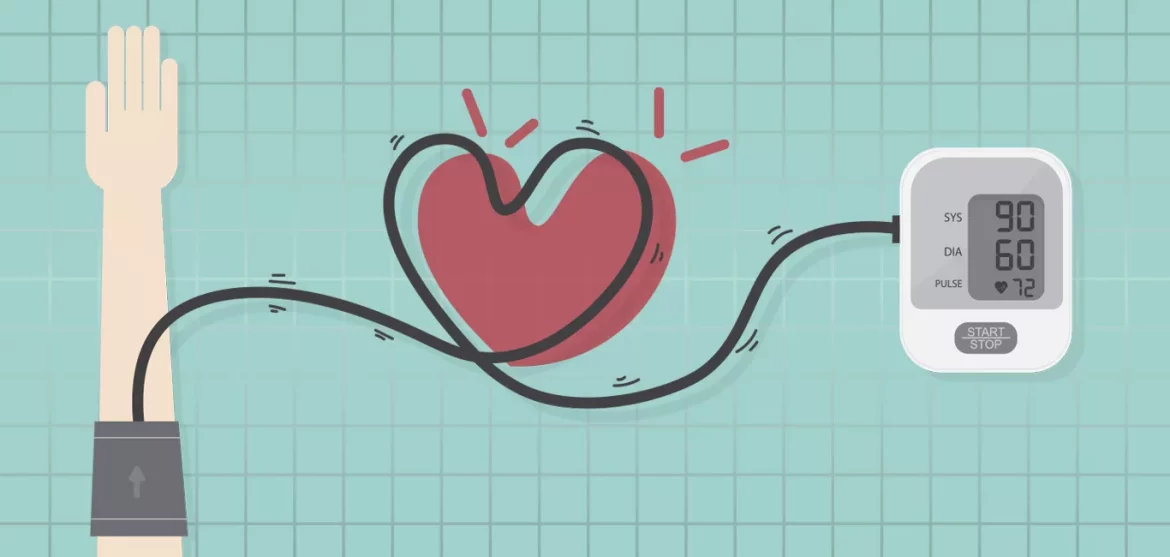Heat stroke is a severe form of heat-related illness that can have life-threatening consequences. It occurs when the body’s temperature regulation system fails, leading to an abnormally high core body temperature, often above 104°F (40°C). This condition can result in various physiological disturbances, including low blood pressure, also known as hypotension.
Understanding why heat stroke causes low blood pressure involves exploring the body’s responses to extreme heat, the mechanisms of blood pressure regulation, and the pathophysiological changes that occur during heat stroke.
Physiological Responses to Heat Exposure
When the body is exposed to excessive heat, it initiates several responses to dissipate the excess heat and maintain a stable internal temperature. These responses include:
Vasodilation: The blood vessels, particularly those near the skin surface, dilate to increase blood flow and promote heat dissipation through radiation and evaporation.
Sweating: The sweat glands produce sweat, which evaporates from the skin surface, helping to cool the body.
Increased Cardiac Output: The heart pumps more blood to transport heat from the core to the skin for dissipation.
SEE ALSO: 10 Foods That People with High Blood Pressure Should Eat
Why Does Heat Stroke Cause Low Blood Pressure?
Heat stroke disrupts these normal physiological responses, leading to several cardiovascular changes:
Peripheral Vasodilation: Excessive heat causes profound vasodilation, which decreases peripheral vascular resistance.
This results in a drop in blood pressure as the blood vessels widen and blood pools in the periphery rather than returning to the heart.
Dehydration and Hypovolemia: Prolonged exposure to heat leads to excessive sweating, which can cause significant fluid loss. Dehydration reduces blood volume (hypovolemia), further lowering blood pressure.
Heat-Induced Cardiac Dysfunction: Extreme heat can impair myocardial function, reducing the heart’s ability to pump blood effectively. This contributes to decreased cardiac output and lower blood pressure.
Altered Neurohormonal Regulation: Heat stroke can affect the autonomic nervous system and hormonal pathways that regulate blood pressure. For example, it may impair the release of vasopressin (antidiuretic hormone), which helps retain water and maintain blood pressure.
Pathophysiological Mechanisms Leading to Hypotension in Heat Stroke
The interplay of these physiological responses and disruptions leads to several pathophysiological mechanisms causing hypotension during heat stroke:
Severe Peripheral Vasodilation:
Vasodilation is a primary response to heat exposure. In heat stroke, the vasodilation is excessive, leading to a significant decrease in peripheral vascular resistance.
The widespread dilation of blood vessels reduces the pressure within the vascular system, causing blood pressure to drop.
Dehydration and Hypovolemia:
Heat stroke often results in severe dehydration due to excessive sweating and inadequate fluid replacement.
Dehydration leads to a reduced blood volume (hypovolemia), which directly decreases venous return to the heart and subsequently lowers cardiac output and blood pressure.
Cardiac Output Reduction:
Heat stroke can impair myocardial function due to direct heat damage to cardiac cells and increased metabolic demands on the heart.
Reduced cardiac output, combined with decreased venous return, results in lower systemic blood pressure.
Altered Autonomic and Hormonal Regulation:
Heat stroke affects the autonomic nervous system, disrupting the balance between sympathetic and parasympathetic activity.
It can impair the release and function of hormones like vasopressin and aldosterone, which are crucial for maintaining fluid balance and blood pressure.
Clinical Manifestations of Hypotension in Heat Stroke
Hypotension in heat stroke presents with various clinical signs and symptoms, reflecting the body’s struggle to maintain adequate blood flow and oxygen delivery to vital organs:
Dizziness and Syncope:
Low blood pressure can cause insufficient cerebral perfusion, leading to dizziness, lightheadedness, and fainting (syncope).
Tachycardia:
The heart compensates for low blood pressure by increasing the heart rate (tachycardia) in an attempt to maintain cardiac output.
Weakness and Fatigue:
Reduced blood flow to muscles and other tissues can cause generalized weakness and fatigue.
Cool, Clammy Skin:
Despite the high core temperature, peripheral vasodilation and sweating can make the skin feel cool and clammy.
Confusion and Altered Mental Status:
Inadequate cerebral perfusion can lead to confusion, disorientation, and even loss of consciousness.
Management of Hypotension in Heat Stroke
Effective management of hypotension in heat stroke involves prompt and aggressive interventions to restore normal blood pressure and prevent further complications:
Rapid Cooling:
The primary treatment for heat stroke is rapid cooling to lower the core body temperature. Methods include ice packs, cold water immersion, and cooling blankets.
Fluid Resuscitation:
Intravenous fluids are administered to correct dehydration and hypovolemia, restoring blood volume and improving blood pressure.
Electrolyte Balance:
Monitoring and correcting electrolyte imbalances, particularly sodium and potassium, are crucial for maintaining cardiovascular function.
Medications:
In severe cases, medications such as vasopressors may be needed to support blood pressure until fluid resuscitation and cooling measures take effect.
Monitoring and Supportive Care:
Continuous monitoring of vital signs, including blood pressure, heart rate, and core temperature, is essential.
Supportive care in an intensive care unit (ICU) may be necessary for severe cases.
PreventionAnd Public Health Considerations
Preventing heat stroke and its complications, including hypotension, involves public health measures and individual precautions:
Public Awareness:
Educating the public about the risks of heat stroke, recognizing early symptoms, and preventive measures is vital.
Hydration:
Emphasizing the importance of adequate hydration, especially during hot weather and physical activities, can help prevent dehydration and hypovolemia.
Heat Acclimatization:
Gradual acclimatization to hot environments can improve the body’s ability to cope with heat stress and reduce the risk of heat stroke.
Protective Measures:
Wearing lightweight, loose-fitting clothing, using sunscreen, and avoiding strenuous activities during peak heat hours can reduce the risk of heat stroke.
Conclusion
Heat stroke is a medical emergency that can cause profound hypotension due to mechanisms such as severe peripheral vasodilation, dehydration, reduced cardiac output, and altered autonomic and hormonal regulation. Recognizing the signs and symptoms of hypotension in heat stroke and implementing prompt treatment measures are crucial for preventing further complications and improving patient outcomes. Public health education and preventive strategies are essential in reducing the incidence of heat stroke and its associated cardiovascular effects, including low blood pressure.


